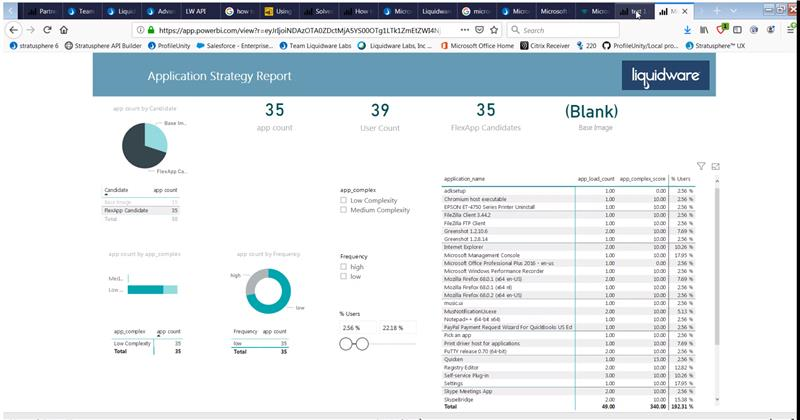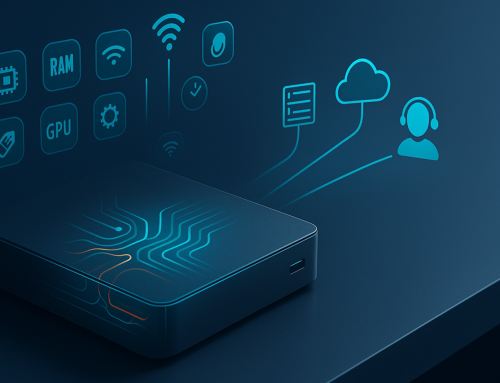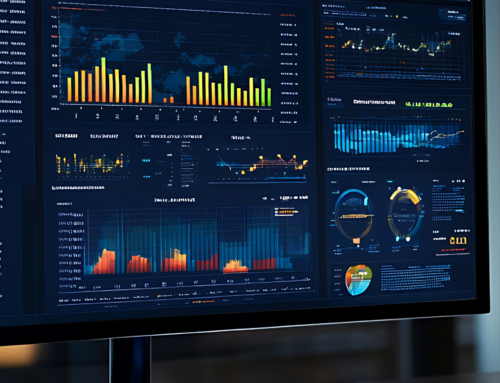The Stratusphere UX platform has always been about getting enterprises the data that it needed to make better decisions. This was often accomplished through dashboards and custom reports available to administrators. Additionally, the data within Stratusphere UX plays a key role in troubleshooting exercises across any platform. At its core Stratusphere UX will always provide great focus around collecting and analyzing desktop, application and infrastructure metrics for the enterprise to consume.
The idea of “Business Intelligence” is not a new concept by any stretch. Companies have been collecting data around human behavior for decades and leveraging that analysis for strategic purposes or to make course corrections. Department stores for example have studied customer traffic patterns for decades around how to plan for the layout of the store. Web design is constantly focused on the page layout and how it applies to spending patterns and eyelines.
Over the last few years, there has been some movement around Business Intelligence integration within the enterprise IT space. Several companies have started to provide focus on Business Intelligence capabilities for enterprises. Microsoft now promotes a platform called Power BI, Salesforce acquired a company called Tableau, Google acquired a company called Looker and ServiceNow has been slowly evolving its automation capabilities to expand into the space.
One thing that each of these platforms have in common is the need for external data sources that serve as the baseline for the “Data Visualization” workflows. Essentially, you point to data sources, interpret the data and then build or customize the business intelligence workflows to suit the enterprise needs.
Based on the current trends, Liquidware has started to explore ways Stratusphere UX can integrate with Business Intelligence workflows for the enterprise. Stratusphere UX has had a robust API for many years and now has the opportunity to evolve into a “Data Mining” engine. As you will see below, we have had some interesting early success integrating with the various platforms.
Power BI
Power BI is a business analytics service that delivers insights to enable fast, informed decisions.
- Transform data into stunning visuals and share them with colleagues on any device.
- Visually explore and analyze data—on-premises and in the cloud—all in one view.
- Collaborate on and share customized dashboards and interactive reports.
- Scale across your organization with built-in governance and security.
What we have discovered during our exploration is that partners and large system integrators seem interested in building their own dashboards or “data visualizations” within Power BI.
Application Strategy has been a focus within Stratusphere UX for several years now. Collecting and combining enterprise metrics around installed vs used, application inventory, application footprint on disk and overall application performance statistics as part of the evolving Application Strategy approach.
As you will see in the graphic below, we have combined the metrics within Stratusphere UX with the Power BI platform for this sample Application Strategy guidance output.
This is a blog written by Perparim Bislimi, one of our senior solution architects in EMEA, describing how to integrate Stratusphere UX data with Power BI
Stratusphere UX is available as an appliance within the Azure Marketplace. Once deployed either within the customers on prem environment or within their Azure instance, Stratusphere metrics can be integrated with the Power BI platform for data visualization.
Tableau
Tableau is another example of a robust, growing data visualization, business intelligence platform. SMP-CORP, an award-winning IT Solution provider based in NY and one of Liquidware’s core partners, has been integrating with Tableau for a few years now. Leveraging Stratusphere UX data behind the scenes, in conjunction with Tableau, SMP creates focused data models and dashboards to share with customers as part of their managed services offerings. Helpdesk, infrastructure management, enterprise resource availability are just a few of the workflows SMP manages leveraging Stratusphere UX metrics in the background.
Here is a link to the SMP-CORP website discussing some of their managed services offerings where Liquidware is working behind the scenes.
ServiceNow
ServiceNow delivers digital workflows that create great experiences and unlock productivity for employees and the enterprise.
One of the core benefit examples of ServiceNow is around helpdesk or enterprise alert notification ticketing workflows. ServiceNow can build automated web-based workflows that enterprise admins can essentially access from anywhere.
What we have discovered during our exploration is that partners and large system integrators would see great value by integrating additional metrics into core ServiceNow workflows. [RD1]
Liquidware is currently working towards early phase data mining integration with existing ServiceNow Apps as well as customer workflows.
AWS QuickSight
Amazon QuickSight is a fast, cloud-powered business intelligence service that makes it easy to deliver insights to everyone in your organization.
As a fully managed service, QuickSight lets you easily create and publish interactive dashboards that include ML Insights. Dashboards can then be accessed from any device, and embedded into your applications, portals, and websites.
Stratusphere UX is available as an appliance within the AWS Marketplace. Once deployed either within the customers on prem environment or within their EC2 instance, Stratusphere metrics can be integrated with the AWS Quicksight platform for data visualization.
As you can see from the graphic below, we are displaying overall usage metrics within AWS QuickSight.
The bottom line is that Liquidware is very excited to evolve and expand the use cases for Stratusphere UX metrics.
If you have any questions around Stratusphere UX, business intelligence or data mining capabilities please do not hesitate to reach out to us at Alliances@liquidware.com
For additional information please visit Liquidware.com










Leave A Comment
You must be logged in to post a comment.